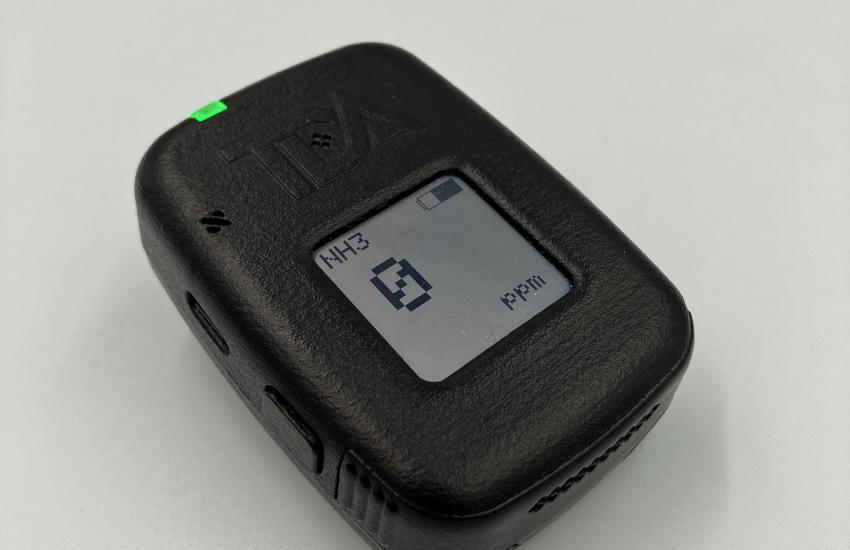First Responders’ Newest Gadget
Along with the everyday threats faced by first responders, toxic industrial chemicals (TICs) pose an increased risk to the safety of firefighters. Therefore, the community has called for an innovative and cost-effective approach to help detect and alert firefighters when such hazards are present.
TICs are extremely common in everyday life and play a vital role in manufacturing commercial processes. The chemicals, which can be in gas, liquid or solid state, cause concern of potential terrorist attacks, according to the Occupational Safety and Health Administration, hence emphasizing a need for protection and protocols in place.
In industrial emergencies, firefighters are generally the first to encounter hazardous chemicals, often without recognizing the threat. “TICs can be easily inhaled, ingested or absorbed through the skin, causing irritation of the nose, mouth, throat, eyes and skin,” said Kimberli Jones-Holt, program manager at the Department of Homeland Security Science and Technology Directorate (DHS S&T).
Prolonged exposure can be fatal, further highlighting the crucial need for sensor technology to detect and alert first responders on scene.
The technological gap was initially recognized by a first responder resource group comprising about 150 state, local, federal and tribal first responders. Though there are currently chemical and radar detection systems, Jones-Holt explained, none are portable or compact enough for effective first responder use.
The call to action has led to a partnered project by DHS S&T and TDA, a research team of scientists and engineers.
One of the first chemicals mentioned in the initial request was H₂S, or hydrogen sulfide. Enabling the new sensors to detect that specific chemical allowed for further development in recognizing other hazardous gases. “Now we have expanded it to six to seven gases,” Ambal Jayaraman, principal engineer and investigator at TDA Research told SIGNAL Media. Besides hydrogen sulfide, the list of target analytes includes carbon monoxide, chlorine, nitrogen dioxide, ammonia, phosphine and hydrogen cyanide.
“Essentially, there is a material that will change color when exposed to a gas,” explained Matthew Chamot, lead mechanical engineer at TDA Research. “Based on that color change, we determine if the gas we’re looking for is present and at what concentration.”
While the device displays the changing color to alert the handler, the sensors also produce auditory and vibratory notifications to alert first responders of present TICs.
The sensors, with platforms that could expand to 15 chemicals, only weigh 70 grams. They are also water and drop-resistant and suitable for use in smoky environments. Of note, the portable devices cost approximately $200 each, significantly differentiating them from similar sensors available in the commercial market.
“The first testing that was done was at the Naval Research Laboratory,” Jones-Holt said. “They were able to obtain the various TICs,” she went on. A report sent back to the TDA team helped with the addition of LED indicators that not only displayed a color change but also the type of chemical detected.
The next set of testing was with the Fairmount Fire Department to gain insight into the usability and effectiveness of firefighters’ everyday gear. “We had them test with their jackets and gloves and all of their equipment,” Chamot explained. “The most difficult thing was probably trying to find a good place where we could mount it, where it would properly sample the gases correctly and also not get in the way or dangle.”

The sensors are to be placed on the chest area close to the breathing zone, Chamot stated.
“The device currently has a Bluetooth low-energy capability where the alarm signals can be sent out,” he said. “That could be later expanded to send to some sort of command center where they could get the results as well.”
To keep the project and sensors low cost, the technology does not currently use GPS capabilities. The team did, however, develop a companion smartphone app. “The data gets dropped by Bluetooth to the cellphones, so the GPS is available from the cellphone in the app to get it conveyed,” Jayaraman added.
Created in 1982, the Small Business Innovation Research (SBIR) program, administered by DHS S&T, helps small businesses research and develop new technologies such as these wearable devices. Under SBIR, the commercialization readiness pilot program, also known as Phase 3, was completed in September 2023. “TDA is trying to look at early funding sources and to make sure we have the freedom to operate,” Jayaraman said.
Wearable devices show a promising future, Jayaraman explained. Under Department of Defense funding, the TDA team is additionally developing thermal desorption tube samplers and physiological monitors. The latter device, for example, is placed on the skin to sample sweat and provide a real-time analysis of stress levels.
“We have plans to expand this to CWA, chemical warfare agents, or fentanyl type,” he continued. “We are actively looking for funding from the Department of Defense.”




Comments